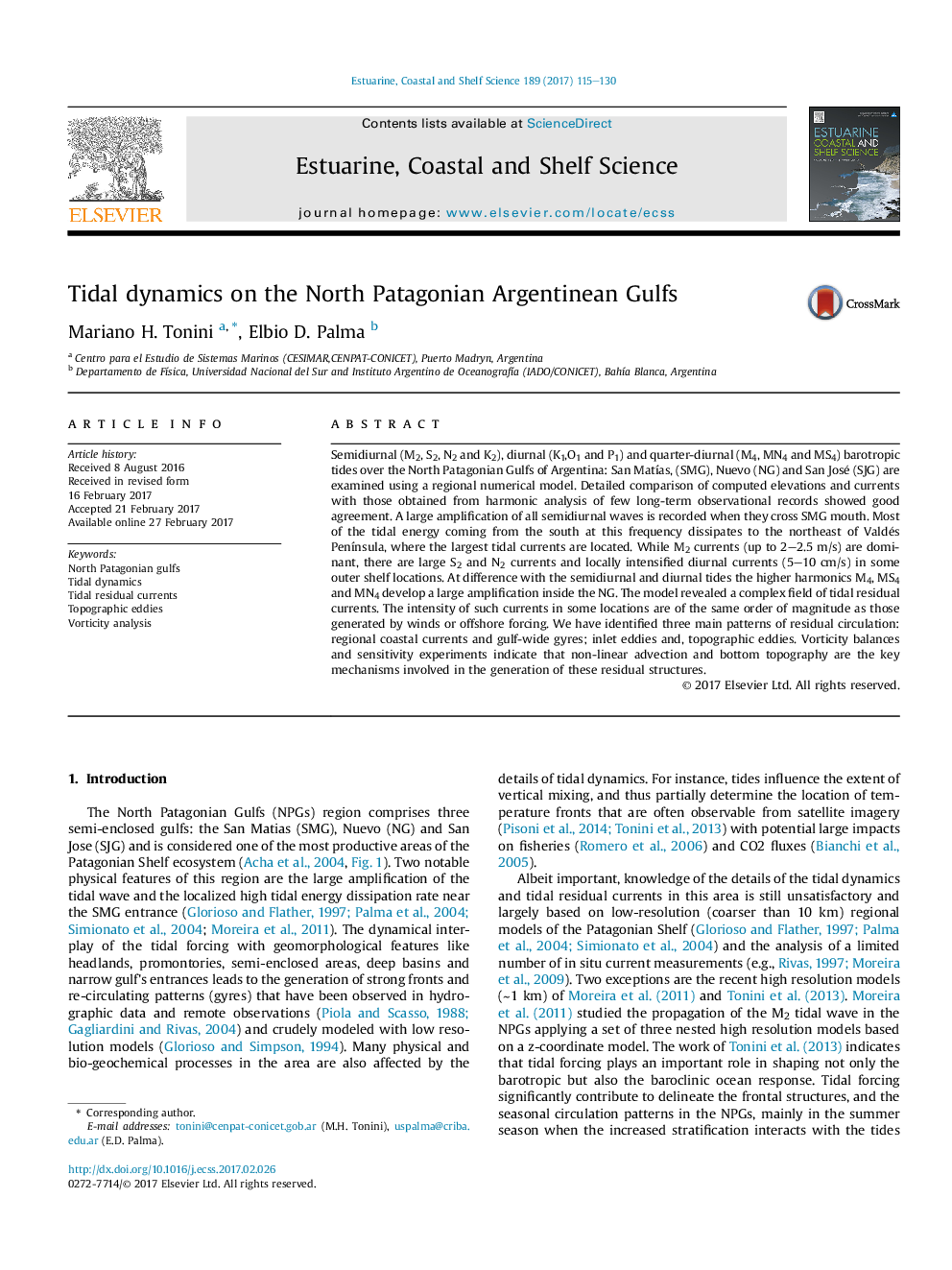| کد مقاله | کد نشریه | سال انتشار | مقاله انگلیسی | نسخه تمام متن |
|---|---|---|---|---|
| 5765199 | 1626613 | 2017 | 16 صفحه PDF | دانلود رایگان |
- Semidiurnal tidal waves amplify up to three times into San MatÃas Gulf.
- Quarter-diurnal tidal waves magnify in Nuevo Gulf.
- The bulk of incoming tidal energy dissipates at the northeast of Valdés PenÃnsula.
- Main tidal residual patterns are coastal currents, inlet and topographic eddies.
- The patterns are generated by non-linear vorticity advection and frictional torques.
Semidiurnal (M2, S2, N2 and K2), diurnal (K1,O1 and P1) and quarter-diurnal (M4, MN4 and MS4) barotropic tides over the North Patagonian Gulfs of Argentina: San MatÃas, (SMG), Nuevo (NG) and San José (SJG) are examined using a regional numerical model. Detailed comparison of computed elevations and currents with those obtained from harmonic analysis of few long-term observational records showed good agreement. A large amplification of all semidiurnal waves is recorded when they cross SMG mouth. Most of the tidal energy coming from the south at this frequency dissipates to the northeast of Valdés PenÃnsula, where the largest tidal currents are located. While M2 currents (up to 2-2.5Â m/s) are dominant, there are large S2 and N2 currents and locally intensified diurnal currents (5-10Â cm/s) in some outer shelf locations. At difference with the semidiurnal and diurnal tides the higher harmonics M4, MS4 and MN4 develop a large amplification inside the NG. The model revealed a complex field of tidal residual currents. The intensity of such currents in some locations are of the same order of magnitude as those generated by winds or offshore forcing. We have identified three main patterns of residual circulation: regional coastal currents and gulf-wide gyres; inlet eddies and, topographic eddies. Vorticity balances and sensitivity experiments indicate that non-linear advection and bottom topography are the key mechanisms involved in the generation of these residual structures.
253
Journal: Estuarine, Coastal and Shelf Science - Volume 189, 5 April 2017, Pages 115-130
